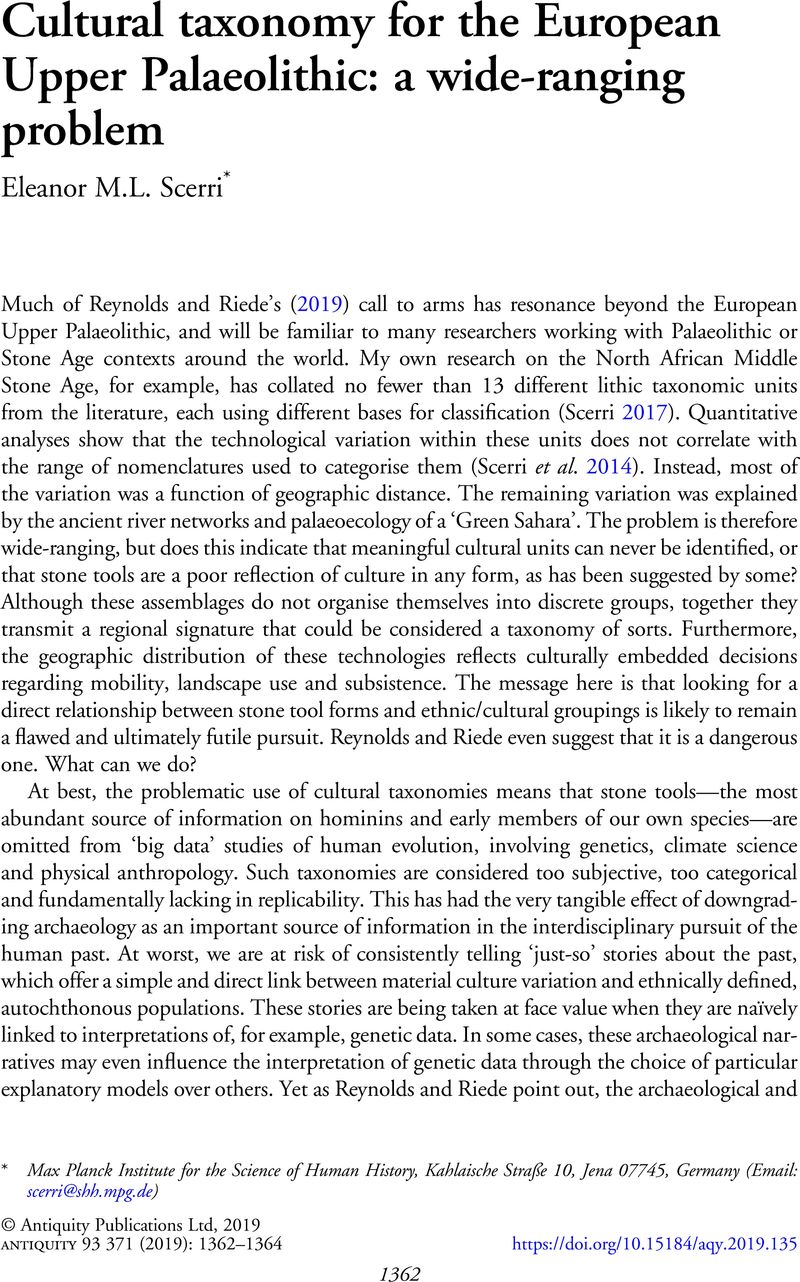Crossref Citations
This article has been cited by the following publications. This list is generated based on data provided by Crossref.
Reynolds, Natasha
and
Riede, Felix
2019.
Reject or revive? The crisis of cultural taxonomy in the European Upper Palaeolithic and beyond.
Antiquity,
Vol. 93,
Issue. 371,
p.
1368.
Wilkins, Jayne
2020.
Is it Time to Retire NASTIES in Southern Africa? Moving Beyond the Culture-Historical Framework for Middle Stone Age Lithic Assemblage Variability.
Lithic Technology,
Vol. 45,
Issue. 4,
p.
295.
Timbrell, Lucy
2020.
How to read stone tools: A new mode system for describing variation in the Eastern African lithic record?.
Evolutionary Anthropology: Issues, News, and Reviews,
Vol. 29,
Issue. 5,
p.
280.
Kuman, Kathleen
Lotter, Matt G.
and
Leader, George M.
2020.
The Fauresmith of South Africa: A new assemblage from Canteen Kopje and significance of the technology in human and cultural evolution.
Journal of Human Evolution,
Vol. 148,
Issue. ,
p.
102884.
Vella Gregory, Isabelle
and
Brass, Michael
2021.
Encyclopedia of Global Archaeology.
p.
1.
Boisard, Solène
and
Ben Arous, Eslem
2024.
A Critical Inventory and Associated Chronology of the Middle Stone Age and Later Stone Age in Northwest Africa.
Journal of Open Archaeology Data,
Vol. 12,
Issue. ,
Colucci, Margherita
Leonardi, Michela
Hodgson, Jason A.
Stringer, Chris
and
Scerri, Eleanor M. L.
2025.
The legacy of Luca Cavalli-Sforza on human evolution.
Human Population Genetics and Genomics,
Boisard, Solène
Wren, Colin D.
Timbrell, Lucy
and
Burke, Ariane
2025.
Climate frameworks for the Middle Stone Age and Later Stone Age in Northwest Africa.
Quaternary International,
Vol. 716,
Issue. ,
p.
109593.



